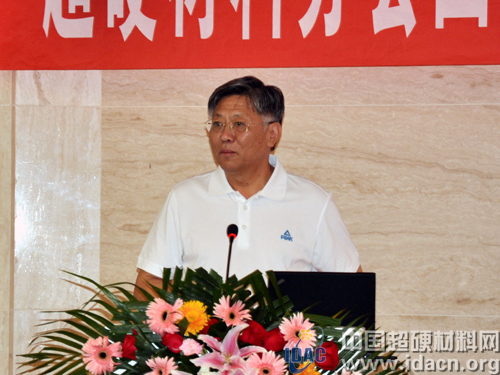 According to the report, according to incomplete statistics, China's diamond production in 2013 was 15.1 billion carats, with an annual growth rate of 7.9%; cubic boron nitride production was 430 million carats, with an annual growth rate of 13.2%. The growth rate of diamond production slowed down, and the increase in CBN was obvious.
According to the report, according to incomplete statistics, China's diamond production in 2013 was 15.1 billion carats, with an annual growth rate of 7.9%; cubic boron nitride production was 430 million carats, with an annual growth rate of 13.2%. The growth rate of diamond production slowed down, and the increase in CBN was obvious. The report said: From the statistics of the import and export of diamonds and grinding wheels in the Customs in 2013, there are two problems in China's superhard materials and products industry at present: one is the vicious price reduction competition, and the other is that the products still occupy the low-end market. On the other hand, China's imports of high-end diamonds and products continue to grow, indicating that there is actual demand for high-end diamonds and products in China, but domestic diamonds and products do not meet certain standards. In terms of diamond saw blades: China's high-end diamond saw blades have begun to have some influential products in the world, but the proportion of low-end products is also increasing. Some enterprises in China have established subsidiaries in Thailand, effectively evading the US anti-dumping lawsuit against Chinese saw blades.
The report also said: China's diamond products dominate the US market, accounting for more than 81.4% of the market share, indicating that China's diamonds have reached the world's advanced level, but at the same time, it is worth noting that the price of diamond products in China is also falling, superfine plating of diamonds. In terms of the Japanese market, the proportion of high-end products exported from China's diamonds and products has increased. The market is mainly competing with Japan, South Korea, Taiwan and other countries and regions.


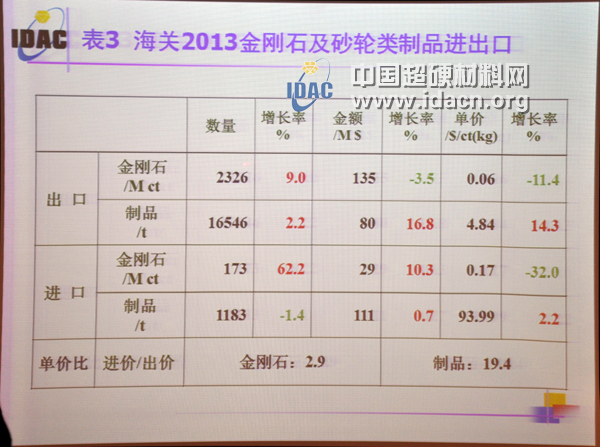

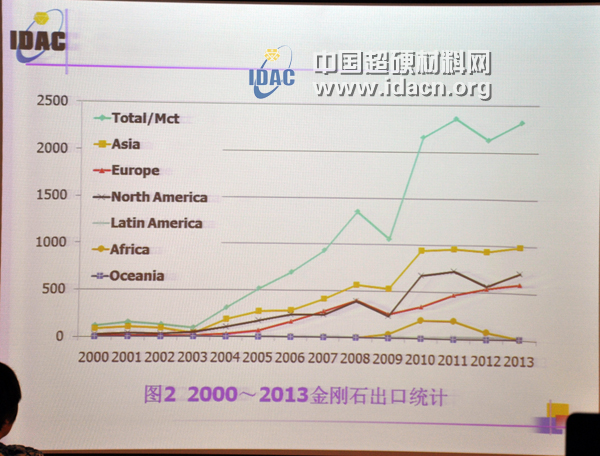
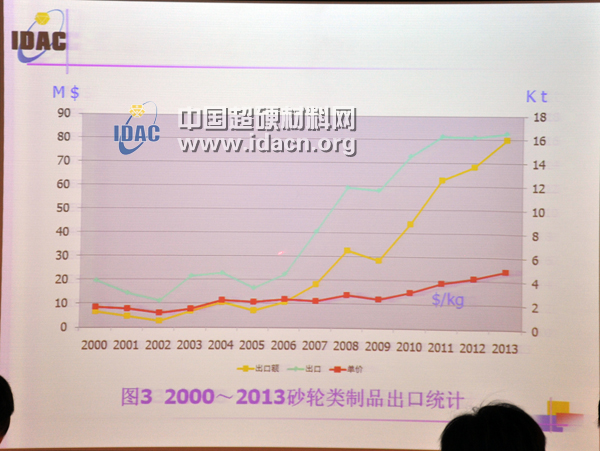
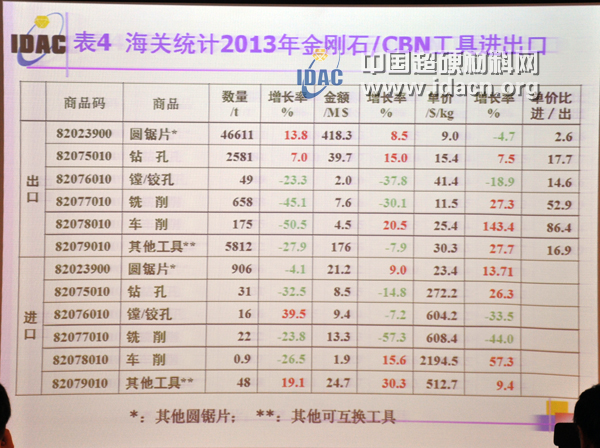
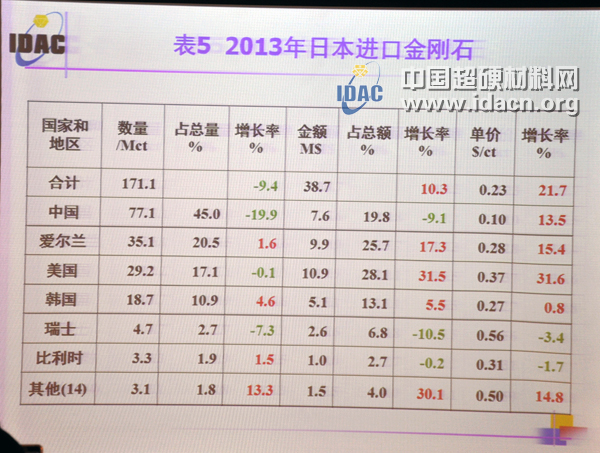
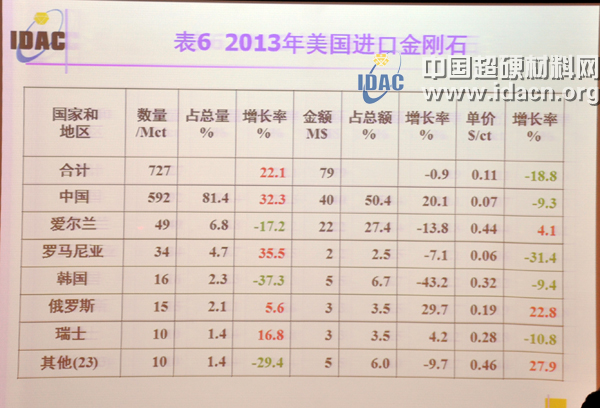



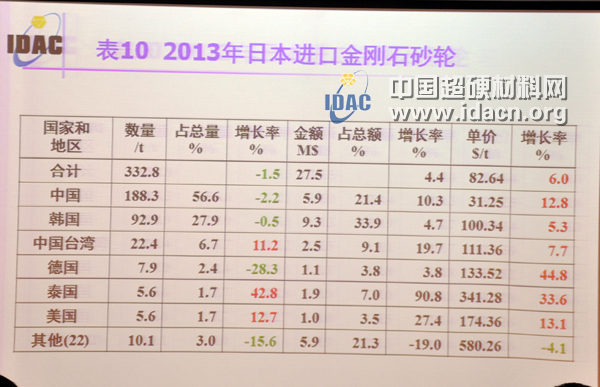
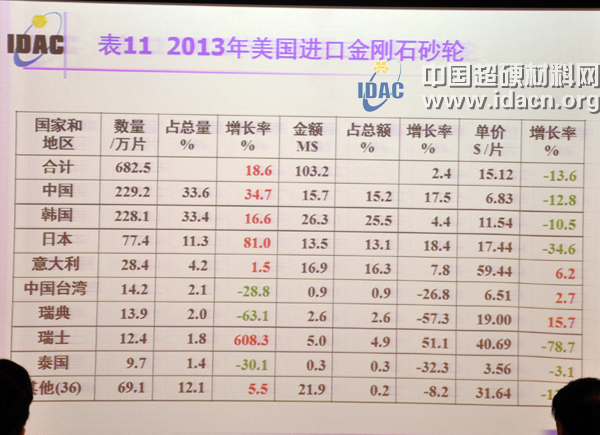

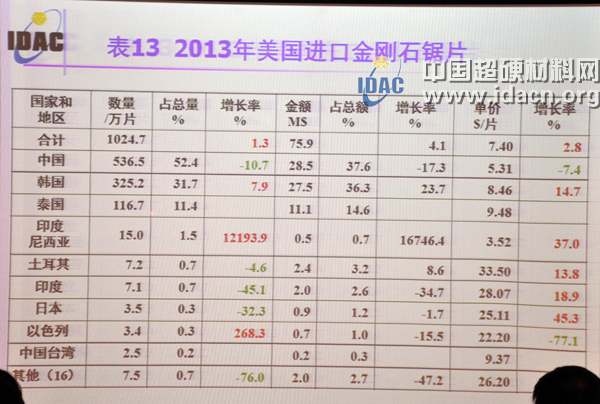 At the end of the report, Secretary-General Li Zhihong concluded that the international economic development is weak, the domestic economic growth rate is slowing down, the domestic and international markets are not in demand, the growth rate of the super-hard materials industry is slowed down, and the enterprise development is facing unprecedented pressure.
At the end of the report, Secretary-General Li Zhihong concluded that the international economic development is weak, the domestic economic growth rate is slowing down, the domestic and international markets are not in demand, the growth rate of the super-hard materials industry is slowed down, and the enterprise development is facing unprecedented pressure. Diamond exports gradually recovered from the second (first 2009) decline, but still not recovered to the historical high point of 2011, and the export unit price fell by 11.4%; the import volume climbed rapidly, the growth rate was as high as 62.2%, creating A new historical high. The unit price ratio of imports and exports is still as high as 2.9 times. Today, we are everywhere to promote that China's diamonds have reached the world's advanced level. Most of China's products are occupied by low-end and mid-end markets, and domestic and international high-end markets are still controlled by developed countries. It can be seen that the industry self-discipline and product structure adjustment tasks are urgent.
The export volume of grinding wheels increased, and the export volume of saw blades increased. The gap was still very large. The unit price ratio of saw blades for lower precision requirements is 2.6 times and 0.4 times higher; the grinding wheel products with high precision requirements are 19.4 times and the turning tools are 86.4 times higher. The task of structural adjustment is very difficult!
The long-term development of China's superhard materials industry is still bright. Strengthening R&D, transformation and upgrading, hard work and continuous innovation are the foundation of enterprise development. It is a blessing for enterprises to study the market, find gaps, and take the path of differentiated development. Avoid being toddlers, losing yourself, blindly repeating construction, and blindly expanding production capacity. The consequences are worrying.
Hydroxypropyl Methylcellulose, graininess More than 98.5% sieving rate for 100 mesh; totally 100% sieving rate for 80 mesh, Hydroxypropyl Methylcellulose HPMC is White or similar to white powder, odorless; Carbonization Temperature: 280-300 ℃; apparent Density: 0.25 to 0.70 g/cm3; Color-change Temperature: 190-200 ;Surface Tension: 42-56 dyn/cm in 2% aqueous solution.
Hydroxypropyl Methylcellulose used in Ceramic industry
- Used widely as binder in the ceramic production industry.
Hydroxypropyl Methylcellulose used in Coating industry
- Used as thickening agent, dispersing agent and stabilizer in the coating industry.
- Have a good compatibility in water or organic solvents.
- Used as the paint remover/stripper.
Hydroxypropyl Methylcellulose used in Ink printing
- Used as thickening agent, dispersing agent and stabilizer in the printing ink industry.
- Have a good compatibility in water or organic solvents.
The molecular formula of hydroxypropyl methylcellulose is shown below

150000 Viscosity Hydroxypropyl Methylcellulose
Pharmaceutical Grade,150000 Viscosity Hydroxypropyl Methylcellulose,Mhpc Pharmaceutical Grade,Hydroxypropyl Methyl Cellulose
Hebei pancan trading co. LTD , https://www.hbpancanshangmao.com
